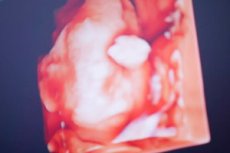
有些自闭症儿童会经历严重的、伴随终生的困境,例如发育迟缓、社交障碍,甚至无法说话。有些儿童的症状较轻,会随着时间的推移而改善。
这种结果差异长期以来一直困扰着科学家们,但如今,加州大学圣地亚哥分校的研究人员在《分子自闭症》杂志上发表的一项新研究揭示了这一问题。该研究发现:这两种自闭症亚型的生物学基础是在子宫内发育的。
研究人员从10名1至4岁患有特发性自闭症(尚未发现单基因致病因素)的幼儿血液中提取干细胞,构建了大脑皮层类器官(BCO),即胎儿大脑皮层的模型。他们还从6名神经正常幼儿体内构建了BCO。
大脑皮层,通常被称为灰质,位于大脑的外层。它包含数百亿个神经细胞,负责意识、思考、推理、学习、记忆、情感和感觉等重要功能。
研究人员发现,自闭症儿童的类器官体积(BCO)显著大于神经正常对照组,大约大40%。2021年和2022年进行的两轮研究证实了这一点。每轮研究都涉及从每位患者体内制备数百个类器官。
研究人员还发现,自闭症幼儿的脑干区(BCO)异常生长与其疾病表现相关。幼儿的脑干区(BCO)越大,其成年后的社交和语言症状就越严重,其脑结构在核磁共振成像(MRI)上的尺寸也越大。与神经正常的同龄人相比,脑干区异常大的幼儿的社交、语言和感觉区域体积大于正常值。
“就大脑而言,越大并不总是越好,”桑福德大学桑福德干细胞研究所(SSCI)主任艾莉森·穆特雷博士说道。“我们发现,重度自闭症儿童的脑类器官拥有更多的细胞,有时甚至更多的神经元,但这并不总是一件好事。”
此外,所有自闭症儿童,无论其严重程度如何,其脑内类器官(BCO)的生长速度都比神经正常儿童快约三倍。一些最大的脑类器官(即那些患有最严重、最持久自闭症的脑类器官)也显示出神经元生成加速。儿童的自闭症越严重,其脑内类器官(BCO)生长速度就越快,有时甚至会发展出过多的神经元。
医学院神经病学系教授、与穆特里共同领导这项研究的埃里克·库切斯内 (Eric Courchesne) 称这项研究“独一无二”。他指出,将自闭症儿童的数据(包括他们的智商、症状严重程度和核磁共振成像结果)与相应的BCO或类似的干细胞模型进行匹配,意义重大。但令人惊讶的是,在他们的研究之前,还没有人进行过这样的研究。
“自闭症的核心症状是社交情感和沟通障碍,”加州大学圣地亚哥分校自闭症卓越中心联合主任库尔切斯内说道。“我们需要了解这些问题的潜在神经生物学原因以及它们何时开始发展。我们是首个开展自闭症干细胞研究,以解决这一具体而核心问题的人。”

